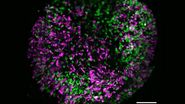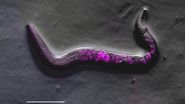Hemoglobinopathies are a major healthcare problem. This study presents a possible diagnostic tool for thalassemia which is based on confocal spectroscopy. This approach exploits spectral detection and white light laser excitation to acquire autofluorescence signals from red blood cells (RBCs).
The discrimination between healthy and diseased RBCs was performed with autofluorescence signals using 405 nm excitation and acquiring the emission from 425 nm to 790 nm. Three characteristics were calculated from the mean emission intensities at 502 nm, 579 nm, 628 nm, and 649 nm.
From the results shown in this study, spectral confocal microscopy could be a useful tool for the discrimination of healthy and thalassemia patients.






